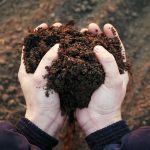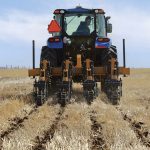
Tag Archives soil health

Where the canola was: a history of Saskatchewan yields by soil climatic zone
Whether by nature, nurture or both, yields jumped in several zones around the turn of this century

Prairie soil scientist and author Les Henry, 83
Henry's outreach to farmers spanned more than half a century

Soil scientist and Grainews columnist Les Henry, 1940-2024
Henry's outreach to farmers spanned more than half a century

Soil should be a strategic national asset: Senate committee
The two-year study of Canada’s soils is now complete and recognizes that while conservation efforts over recent decades have been tremendous there is still more to be done

Organic farmers invited to soil health benchmarking study

Meet your Soil Champions

Let’s talk strip tillage
An Alberta farmer shares his experiences with the system that provides a middle ground between full till and no till

Biologicals and soil health
Q & A with an expert

Study shows glyphosate, no-till systems and herbicide-tolerant crops benefit Prairie agriculture
Benefits include improved soil quality, less erosion, increased carbon sequestration, and reduced fuel consumption and greenhouse gas emissions

Les Henry: Gone with the wind. Soil erosion by wind mostly history in the Prairies
Soils and Crops: We need to let society know


